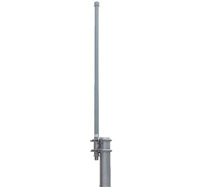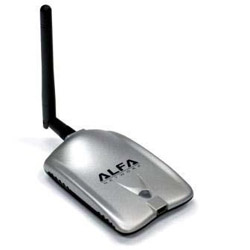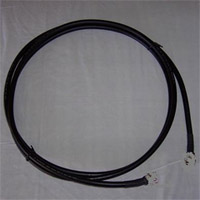 As a former professional computer guy, I get asked all the time about what type of system people should use to get wi-fi from their boats, so I have included this page in the tips section of our website to at least get you started.
As a former professional computer guy, I get asked all the time about what type of system people should use to get wi-fi from their boats, so I have included this page in the tips section of our website to at least get you started.
WiFi is short hand notation for wireless fidelity. Basically, WiFi is a protocol, or language if you will that allows computers and devices to transfer information via air waves. In short, it lets you gain access to a network (typically the internet) without having any wires attached to your computer.
All laptops made in the last 4 years have an internal WiFi adapter. Those that are older can be retro fitted with an adapter that either slides into the PCMCIA slot or an USB port. Unless you are taking your laptop to the area that has the WiFi connection (i.e. a coffee shop), your internal adapter is probably going to be too weak to connect to the signal.
 We carry three laptops on Dream Catcher, which sounds like a lot, but I like to have dedicated machines for both Amy and myself and then I keep a third machine strictly for code development work and video games. All three computers share the connection described below even though two are Windows based and the other is Linux based.
We carry three laptops on Dream Catcher, which sounds like a lot, but I like to have dedicated machines for both Amy and myself and then I keep a third machine strictly for code development work and video games. All three computers share the connection described below even though two are Windows based and the other is Linux based.
There are three main components to the system, the adapter that plugs into the USB ports on your computer, the cable that connects your adapter to the antenna and then the actual external antenna itself.
First off, we start with a high powered, USB adapter made by a company called Alfa. This adapter offers 500mw of transmit power which is 10 times greater than a normal internal wifi unit (50mw). The cool thing about this adapter in addition to the high output, is that it draws its power strictly through the USB ports on your laptop. This means there is no other 110v AC connector needed to use it. Of course, to do this, the adapter uses two of your laptop's USB ports, but I haven't seen a modern laptop with less than three ports, so this is not an issue.
 As with all USB devices, you should not extend the device more than 6 feet from the laptop. This is to prevent power drop off from the signal having to travel over more and more physical wire. Most adapters come with a USB cable that is 6 feet or less for this reason. This adapter also comes with a small 5 or 6 inch rubber duck antenna that works better than the internal laptop adapter, but to really get maximum performance from your adapter, you will need to replace it with a higher gain, external antenna.
As with all USB devices, you should not extend the device more than 6 feet from the laptop. This is to prevent power drop off from the signal having to travel over more and more physical wire. Most adapters come with a USB cable that is 6 feet or less for this reason. This adapter also comes with a small 5 or 6 inch rubber duck antenna that works better than the internal laptop adapter, but to really get maximum performance from your adapter, you will need to replace it with a higher gain, external antenna.
Since you only have 6 feet of USB cable length to the adapter, you will need to have a longer cable run from the adapter to your external antenna. Using the proper cable (LRM400), you can locate your antenna up to 40 feet away from the adapter without suffering power loss. Any further away however and you will begin to see a weaker and weaker signal at the antenna.
Fortunately, 40 feet is usually more than enough for most of us to get the antenna to a suitable mounting location. As with most antennas, higher placement is usually better, but remember that when dealing with wifi, you are often limited by the base station that you are connecting to and not the power of your gear. This means that if you can get the antenna at least 6 feet off the water, you are almost guaranteed to be limited by the network you are connecting to and not your setup. On Dream Catcher, we mount the antenna on top of the dinghy outboard crane and this places the tip of the antenna about 12 feet off the water.
As an aside, it is important to make sure you get LRM400 (or equivalent) cable when you place your order. This cable is shielded and twisted internally and will not bleed off power as the thinner LRM150 series will. Assuming you get the LRM400 cable, hold it next to the USB cable and you can see the difference in thickness is about 20 fold.
The antenna itself is subject to some debate, but for all around performance, it's best to get something in the 8 to 10 decibel range. Most antennas in this class are around 3 feet in length and usually come with a 1 inch clamp mount base. An important consideration to remember with your antenna is to make sure that it is omni directional as most boats are not stationary and tend to swing at anchor.
There are several different scenarios that can work for extended range wifi connectivity and I have experience with most of the competing technologies, but for most people I recommend something similar to what we use as I believe it will serve best as far as ease of use and range for your buck.
Total price for the system comes in just over 150 dollars, which when you figure the cost of having to replace one laptop due to a random wet dinghy ride to access the local internet connection, this is pretty reasonable.
Below are the links to the gear I currently (as of 11/10/08) use and recommend to others who ask.
I am not affiliated with any of these groups and they do not give me kickbacks on anything you might purchase (although they probably should). As always, it's a probably a good idea to shop around for the best prices.
Good luck and happy surfing.
[Update: July 2009]
I am putting together a new list of suppliers for the parts I recommend, but I have had an extremely dissapointing experience with Frank, the owner and operator of wlanparts.com and as of this writing I would not do business with this guy if he was the last vendor on the planet. Stay away from this guy and watch for an update on this shady, fly by night operation coming soon to RipOffs.com
Antenna [deleted]
Cable [deleted]
Alfa 500mw USB Adapter